AAI Assoluto NSA
I went to see a friend who powers his setup (that costs, at list prices, about 160 thousand Euro) through the Accuphase PS-1250 active power supply. His audio plays in a custom built and acoustically well treated room, a truly awesome listening environment. Expectations can do wonders and I did not want him to be biased, therefore I put it like this: "I've got a prototype of a homebrew power cord. I believe it is not bad, yet there are some attributes that I don´t like, so I would love to hear your opinion." He mumbled something to the effect of why I was bringing it to his house and sat down on his listening couch, rolling up his eyes. The Assoluto went into a spare outlet of the PS-1250 and was not plugged in to anything else, which he didn't know, because he believed we were replacing the power cord of his preamp. He listened for a while, concentrated and with eyes closed, and gradually I watched his frowned face melt into a smile. About four minutes later he jumped up and started pacing around the room, exclaiming "Hey, you said the cable was not good. I like it more than my cable!"
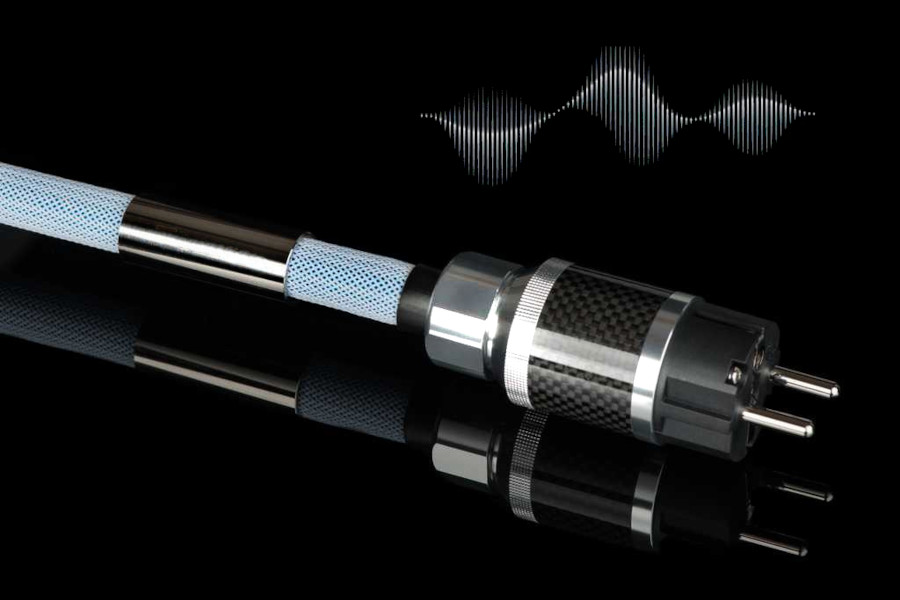
A parallel WHAT?!
The latest ‘audio noise’ theory says that the main problem of the EM interference is not the electric grid as such, rather the noise is generated by the audio components themselves by their digital circuits, switching supplies, displays, and bridge rectifiers. And because the power delivery is not a one-way affair (the power does not flow), this noise is backmodulated on the AC, redistributed in the system, and passed to all components. Depending on their sensitivity, it can be heard as smearing, loss of transients, loss of spatiality, problems with microdynamics, and tonal distortions. As subtle as these alterations can be per component, the negative effect is cumulative. Here comes the idea of parallel filtering.
The parallel filtering essentially means that a filter is connected in a parallel position to the power outlet that provides juice to the whole audio set-up or to its particular component. This way the filter is not inserted in ‘AC-signal’ line of an audio system at all, still it becomes a part of the AC grid the audio system is connected to and helps removing the modulated noise. The advantage of the parallel filtering (or any other parallel power ‘processing’) from the audiophile point of view is that it does not represent any insertion losses, does not restrict current delivery and thus does not damp dynamics. This may or may not be the correct view.
In all fairness, another theory says that such a thing – that is a parallel filtering device - can only work as an antennae and will pick up RFI and introduce high-frequency noise on the AC line. This theory can be proved by using various mains analysers, such as IsoTek Noise Analyser, which usually freak-out in the presence of parallel filtering devices.
As always, either of the two theory camps can be right, perhaps both are right. From my pragmatic point of view as a listener, I only need to ask one question to myself: Do I hear an improvement in how the music sounds? If yes, let’s go ahead. If not, then I’m not interested anymore, thank you. Fortunately, the parallel filtering (or parallel polluting if you like) is super-easy to test. What you need is to plug the device/cable into a spare power outlet in the wall, a power distributor, or a filter. There are many specialized parallel devices available, at all pricing levels: PS Audio Noise Harvester, iFi iPurifier, Nordost Qk1 and Qv2, several types of Ansuz Sparkz, Furutech NCF Clearline, Shunyata Research Typhon models, Telos Audio Macro Noise Reducer, Acoustic Revive RPC-1K, QSA, and dozens of others from less high-profile brands. I have tested many and each worked – some delivered audible improvements, some killed the sound, some were in the middle and improved one parameter to kill another one. Yet there is another universe of options – a parallel power cable.
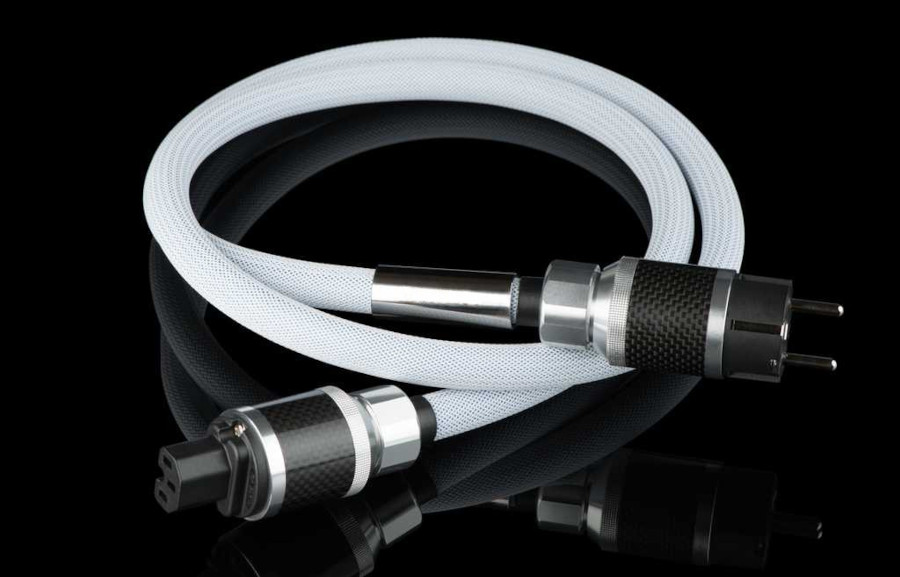
Experiments with WHAT?!
The idea came to me circa five years ago. For a review, I needed to burn in a power cable, and so I plugged it in an unused outlet in the wall. The sound of the main system changed. To worse. The music became shrilly, the soundstage virtually collapsed. I tested some other power cables that I had on hand, and the result varied quite significantly. At best, the cable did nothing. Paradoxically, the one that did nothing was a standard stock cord. All other high-end and mid-end power cords deteriorated the sound in one way or another, although some of this deterioration sounded attractive at the first listen and only later was it identified as unwanted glare, bass smearing, or some other phenomena. Since then, no matter what, I always try any new cable or a filtering device in the parallel position. And some of them were really improving sound. For example, Shunyata Research Omega XC v2 made my system sound more exquisite. The details were finer, the colours more natural, and the overall slam improved. Rather cheap Roth Audio Ariya improved instrumental separation, microdynamics, and midbass weight, although it moved the whole soundstage forward, perhaps too much. Ansuz C2/D2/DTC cords did not work well as parallel devices, at least not in my system, there was always loss. However, when I added Ansuz Mainz D2 distributor to the end of the Ansuz D2 cable, the sound improved. The real revelation arrived two years ago: Synergistic Research's Galileo SX Ground Block. It is supposed to be a parallel device, but it is also an active device. However, when I plugged it in a spare outlet without switching it on, my jaw dropped. The music came alive, the electronics disappeared, I could hear more of everything. No trade-offs whatsoever. For the record once again: the SX Ground Block was not switched on, neither any grounding cables were connected to it. It was used in a totally passive way, just hanging on the same AC line. Last year I had similar experience with Synergistic’s SRX power cable. The same effect, only to a bit lesser extent. On the other hand, Synergistic's Galileo SX did almost nothing to the sound. These days I re-live the same experiments with the AAI Assoluto. This time, however, it is about a truly amazing transformation.
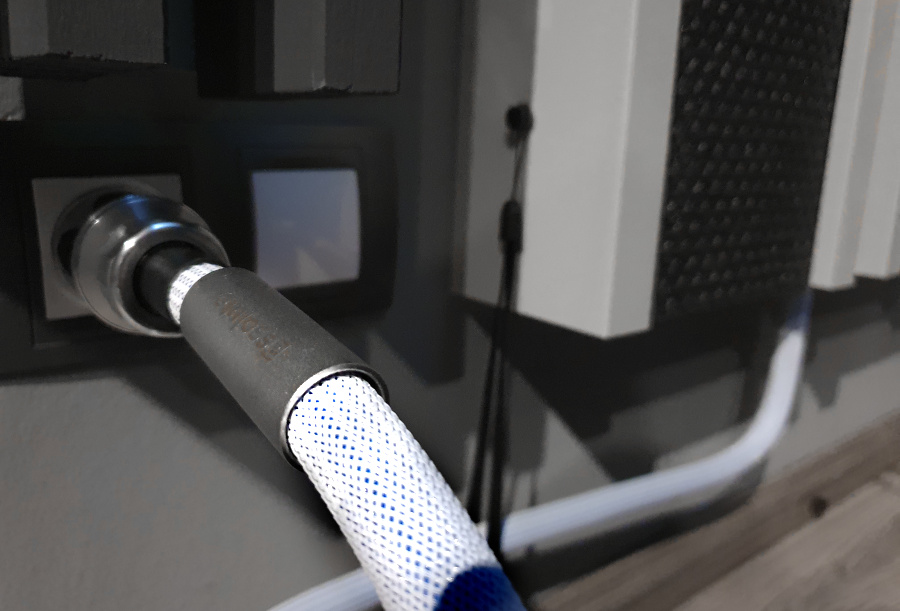
Better HOW MUCH?!
The result can be summed up as 'enhanced reality'. The difference should be best described as switching from a movie in 2D to a 3D experience. For example, in Molly Bán (Alison Krauss, A Hundred Miles on More), a beautiful Irish folk song, a delicate musical embroidery is woven from interlocking harmonies of an acoustic guitar, American zither, banjo, and mandolin, which is tuned an octave below the classical mandolin. The track is recorded in the Studio A of Nashville's Sound Emporium, which more than anything else resembles a large acoustically treated living space. There are four stringed instruments, each with its unique pitch, each at a different height, both relative and from microphones. Most importantly, the recording was made live in studio, and all the instruments mentioned - along with the double bass, drums and the voice - played together live, so each microphone picked up not only the sound of the recorded instrument, but naturally there was some bleeding from other instruments too. With the Assoluto, I can hear who is closer and who is further away (relative to the microphones), who is higher and who is lower, who is more to the left and who is more to the right. I can hear the phase shifts of some sounds that are combined from the pick-ups at the front and those the back of the soundstage – those that would normally be behind the listener’s head but the stereo can't place them there. I can also hear the hilarious depth of each instrument, I can hear the difference between the spatially more static sounds (drums and bass) and the spatial dynamic sounds of the instruments that move and swing in front of the microphones, because of course the musicians cannot sit or stay absolutely still when playing. It is very rare to hear these spatial microshifts, for usually acoustics of the listening space and components smear it. Ditto for Ms. Alison Krauss herself: she is not a plastic dummy head, she moves when she sings, often quite significantly, and all these nuances – when reproduced accurately - drastically affect how we perceive the music, from the ‘experience as usual’ to the aforementioned holographic reality enhancement. The newly acquired three-dimensionality is sweetly addictive, like a drug: pull the Assoluto out and the 3D visor disappears.
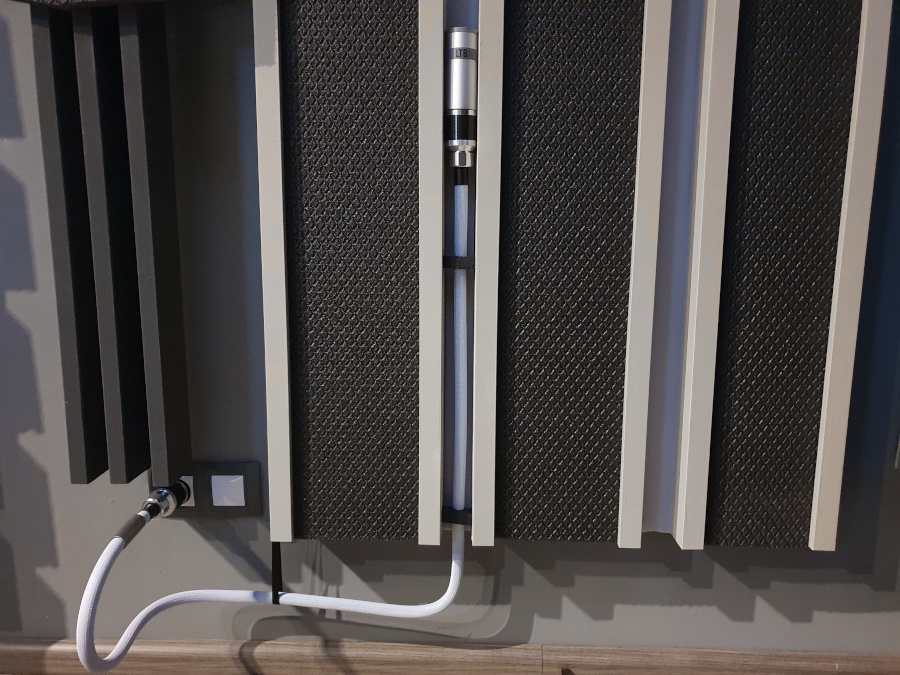
Full Dimensional Sound
The Full Dimensional Sound project of Capitol debuted around 1950, first in mono, then in stereo. The goal of it was to convey the depth and richness of the concert hall “with all the impact and immediacy of a front-row seat”. In 1958, on Stage Seven of Samuel Goldwyn Studios in Hollywood, the Concert Arts Symphony Orchestra, directed by Erich Leinsdorf, recorded a really spectacular program called Portraits in Sound. The purpose was to document the beginning of the romantic era in the classical music, the moment when the music stopped being formal and conventional, and began paint pictures, tell stories, and set moods. The era when orchestra went from formal to a richer and a more colourful tapestry of sounds. The recording technique was (measured by today’s standards) truly minimalistic: for the stereo image, two Neumann microphones were elevated 5 meters above the orchestra on the left and right, and another Neumann was placed over the woodwinds. This was the basic triangular pick up, reinforced by close-up mics on the cello, brass, and timpani section. The program was recorded on a 3-track Ampex reel-to-reel tape machine, and in 1994 this master tape was carefully remastered by Doug Sax for CD. Even without the AAI Assoluto the result is spectacular. In terms of the musicality, soundstage transparency, and richness of instrumental colours, it ranks among the best sounding classical recordings available. It is very difficult to pick any highlights, as all the presented tracks are highlights. The selections of Rimsky-Korsakov, Sain-Saens, Smetana, Chabrier, Dukas, Verdi, and other romantic authors are made perfectly to underscore the aforementioned effort to capture the pictures and stories told by the composers in vivid colours. However, it is with the AAI Assoluto (as a parallel device) when these performances become immersive. The first thing I noticed is how the sound wrapped around the room. For example, in Russian Easter Overture of Rimsky-Korsakov, a gentle plucked harp string is heard simultaneously to the violin solo. Without the Assoluto, the sound is rather nondescript - more an unintentional tapping noise that made it into the recording, not a musical intent. With the AAI Assoluto, the sound is more distinct and three-dimensional, and it clearly becomes a harp. At the same time, it moves from its original vague spot into a very precise location to the far left of the violin, and one can hear the plucks sound travelling from rear to front until it decays somewhere to the left of my ear, that is 2 meters to the room from the left speaker plane. It is similar to the famous a barking dog QSound effect on Roger Waters’ Amused to Death.
Another remarkable piece is Rossini’s Passo a Sei (The Dance of Six) with its playful winds. With the AAI Assoluto, the clarinets are tracked with a millimetre precision, and each instrument becomes alive on its own, breathing in its own space-time continuum. The benefits of the AAI Assoluto become readily apparent it when it is pulled out of the power outlet. The clarinets become ‘a clarinet section’, the wraparound effect gets diminished, and the front-row seat perspective is replaced by a tenth-row one.
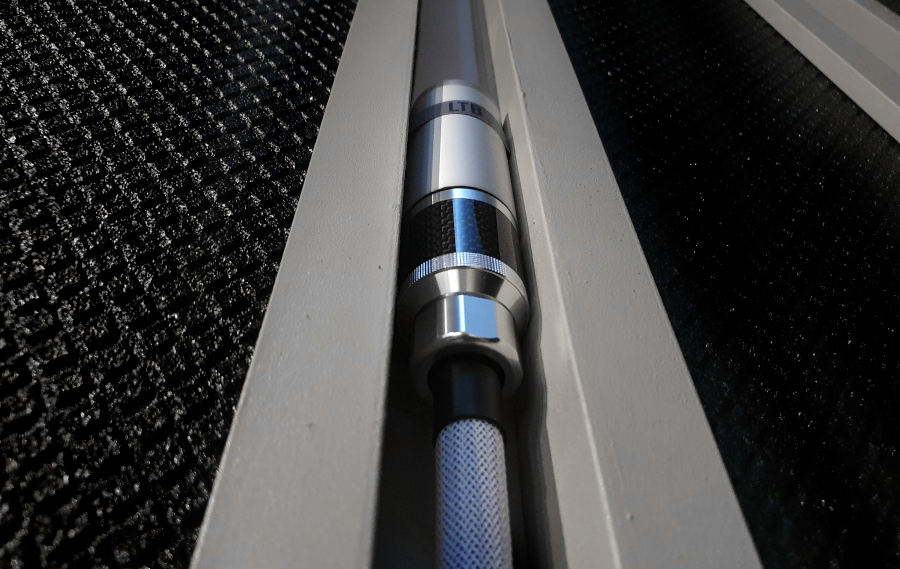
AAI Assoluto
Audiodrom positively reviewed AAI Maestoso power cable some time ago, when the Maestoso was at the very top of the AAI’s catalogue. Since then, the developers have been refining the technology. The Maestoso has been improved into the Maestoso 2 version, and the flagship position has been taken by the new Assoluto range. And more is coming.
The AAI’s design fundamentals have not changed: they keep using solid core conductors (silver-plated pure copper for the Assoluto), customized Schuko and IEC plugs (C15 and C19 available), as well as their proprietary Interference Suppression Technology. The latter comes in its 3rd generation, the IST3 ASL. The AAI’s website says the following: [The IST] is intended for processing and treatment of materials, conductors and insulators in order to modify their properties not only to resist, but also to absorb and eliminate negative phenomena, especially in connection with electromagnetism and resonances. […] These are not changes at the level of nuances, or in the way of "a quid pro quo basis", but fundamental and positive changes in all parameters of sound, perceptible even by less experienced listeners. Thanks to the IST technology, new quality possibilities open not only for reproduction, but also for sound recording.
Alike other AAI power lines, the Assoluto is reasonably thick, reasonably heavy, and reasonably flexible. If you don´t need to bend it in a radius below 15cm, you should be fine. Also, in this particular (parallel] application, you have more options where to route the cable. I only recommend having a clearance from the floor – use suitable raisers to lift the cable.
Earlier in this review, I wrote that “From my pragmatic point of view as a listener, I only need to ask one question to myself: Do I hear an improvement in how the music sounds? If yes, let’s go ahead. If not, then I’m not interested anymore.” With the AAI Assoluto the improvement is instant and significant. It is that simple.
Disclaimer: Don’t curse me if you hear it other way in your own system. The matching process is the beauty of high-end, so keep searching for your parallel cable.
I should owe you to explain what the NSA means. It is purely my own acronym for Non-Standard Application, and it has nothing to do with official branding.
Price at the time of review: 4 335€- per 1.5m
Manufacturer's website: www.aai.ski.sk
Contact: Authentic Audio Image (AAI), Povážská Bystrica, +421 905 694 943
(C) Audiodrom 2023



